Trametes & Naked Cap
hive-151327·@ifarmgirl·
14.161 HBDTrametes & Naked Cap
<div class ='text-justify'> Magandang buhay! Still gloomy today and unusually cold too. That's because of a weather disturbance. And in a mountainous region like ours, the temperature tends to drop below 20 or 15 °C, and as the end of the year approaches, it can go as low as 7 °C. So yeah, we stayed indoors and kept ourselves warm and comfy. And since it's Friday, it's time to brag about my fungi hunts. Yes, not only do I hunt for shadows and reflections, I also keep my eyes open for mushrooms😅 Thanks to Ewkaw for this fun initiative and space where we get to share and see various types of this natural wonder we call fungi or mushrooms. Who would have thought we'd see something this large in a hot location? Or maybe I was mistaken in my notion that mushrooms grow in cold and moist places, hehe!</div> <center>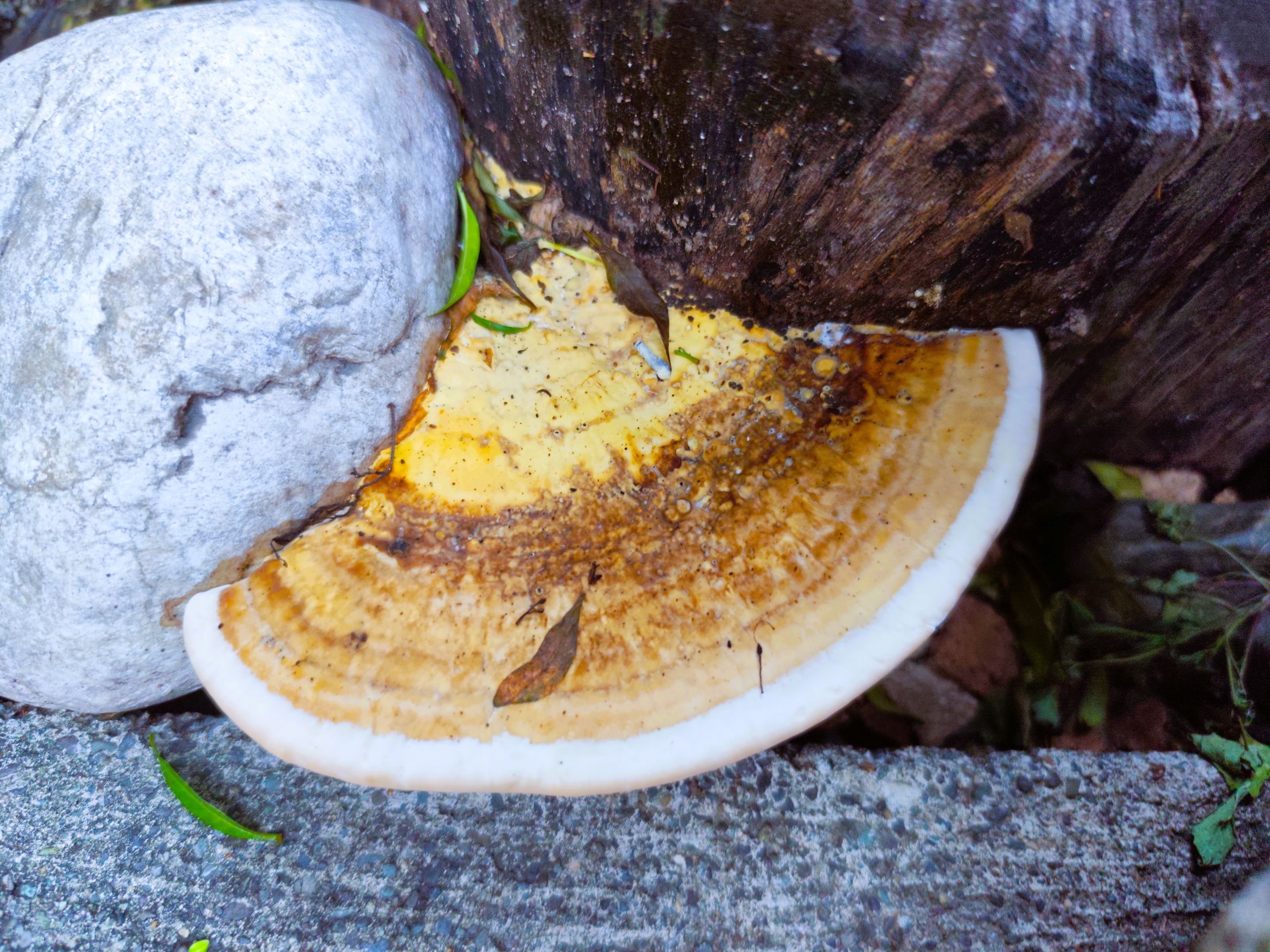</center> <sbr> <div class ='text-justify'> Joke aside, it was just surprising for me to find them in that unlikely place, just outside the unit in the resort we spent the night not so long ago. But then, it's not that unlikely, especially when there's a tree trunk. GL identified the first one above as Trametes Cubensis for its pancake shape, concentric discs, and off-white to yellowish, tough flesh. The white ones below are Trametes Betulina, or gilled polypore. Most of them are growing on the other side of the trunk. These are large, by the way. For a little perspective on their size, the trunk is around 15 inches in diameter.</div> <center> ||| |-|-| |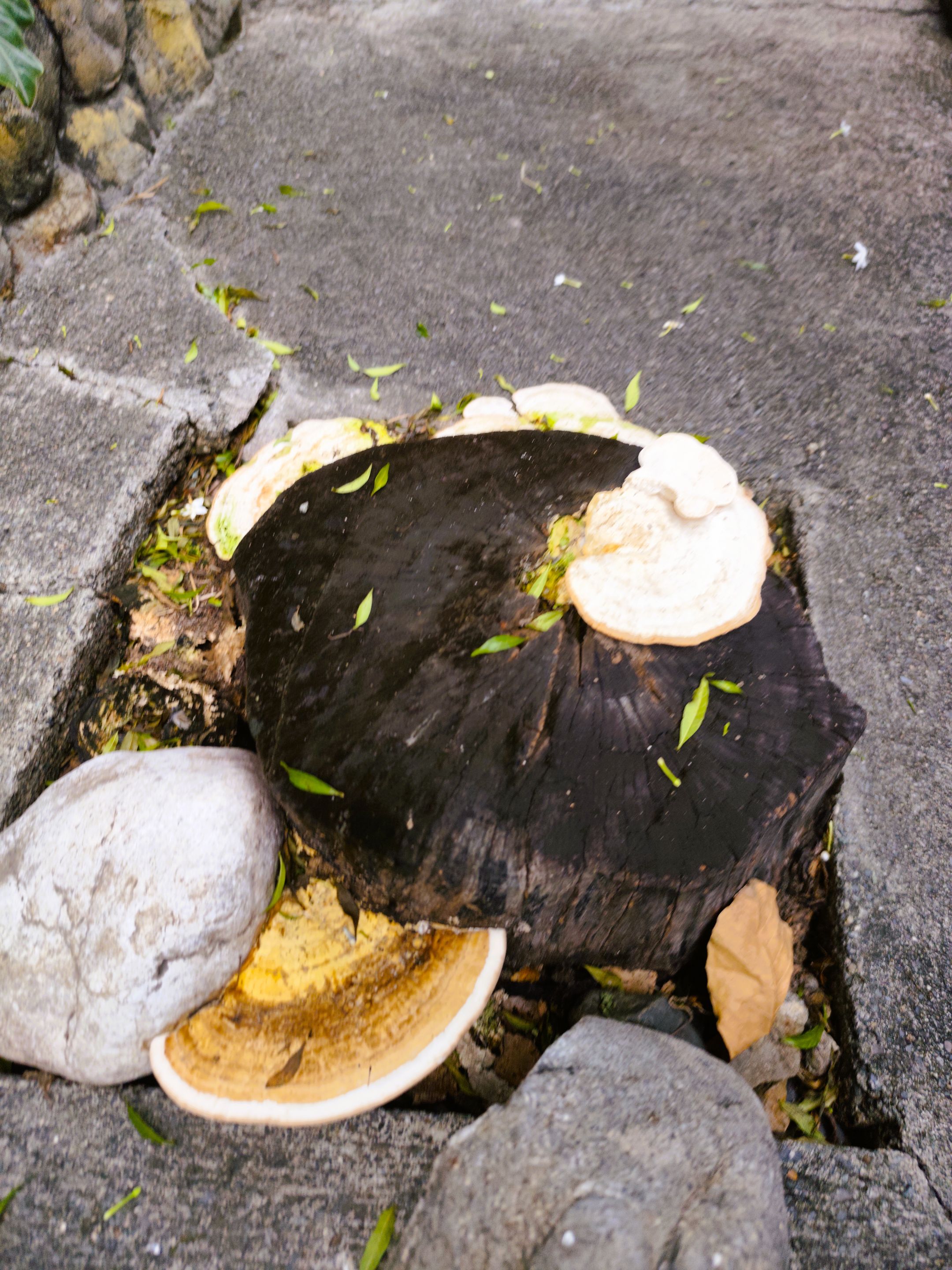|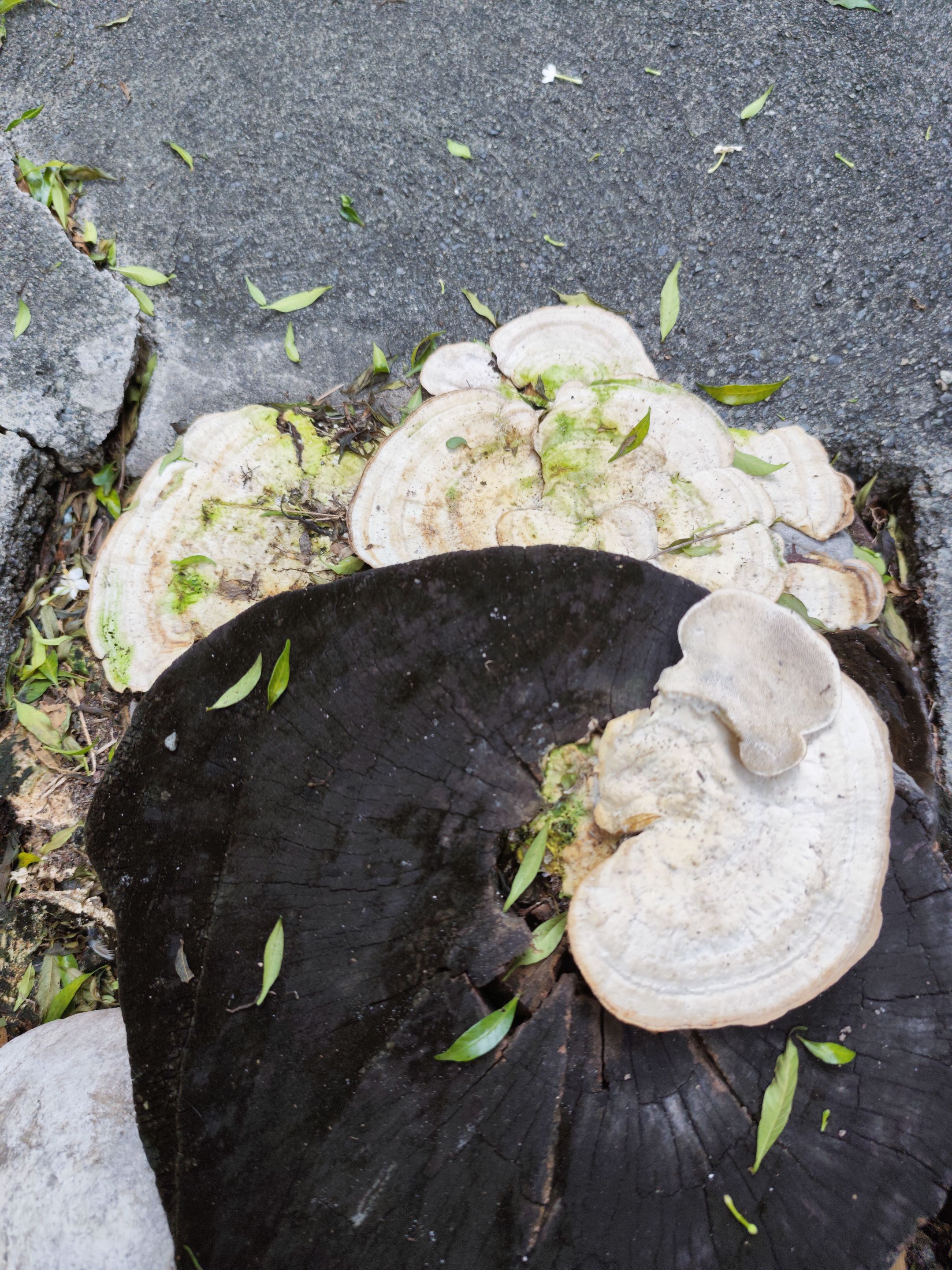| |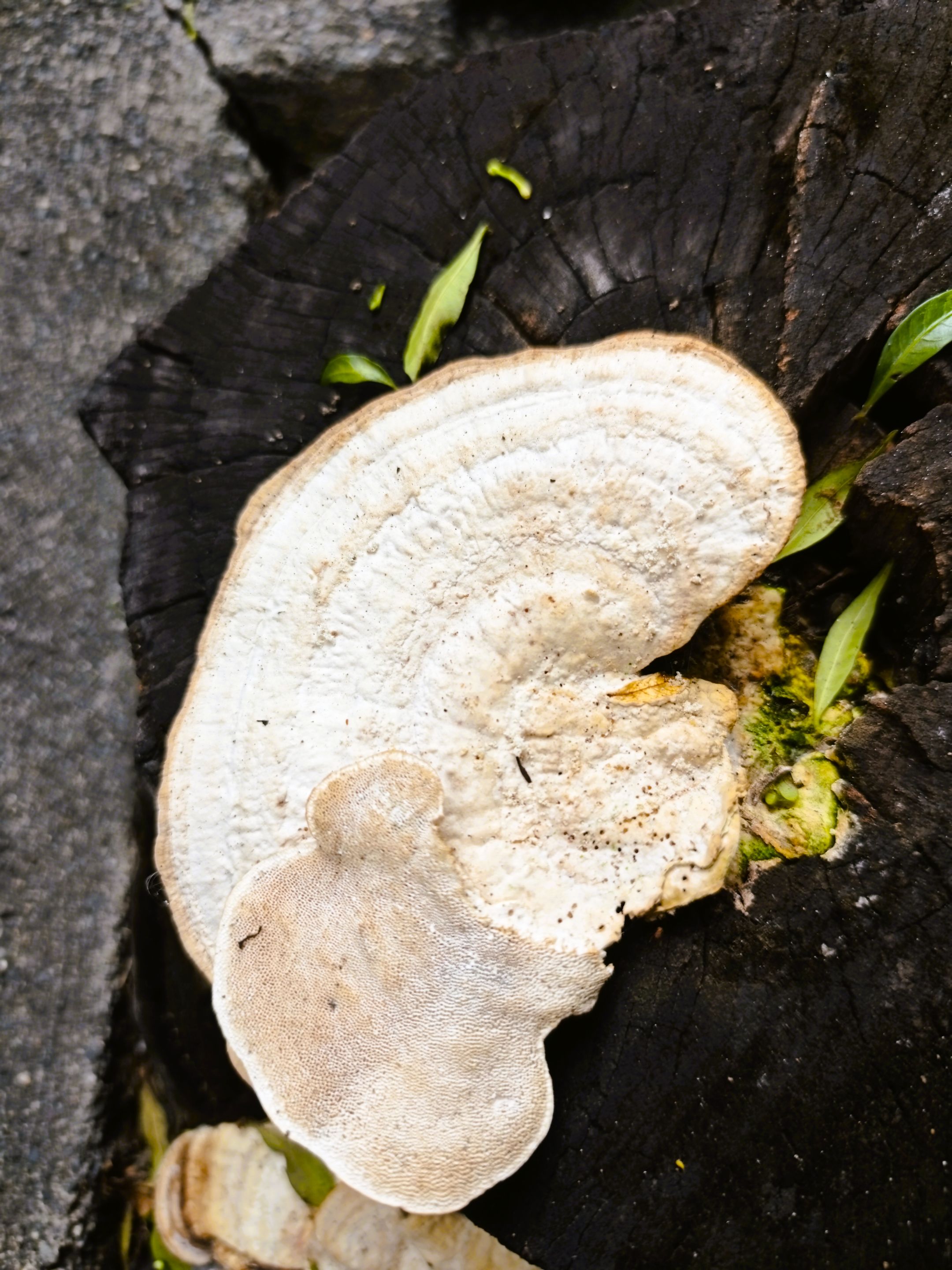|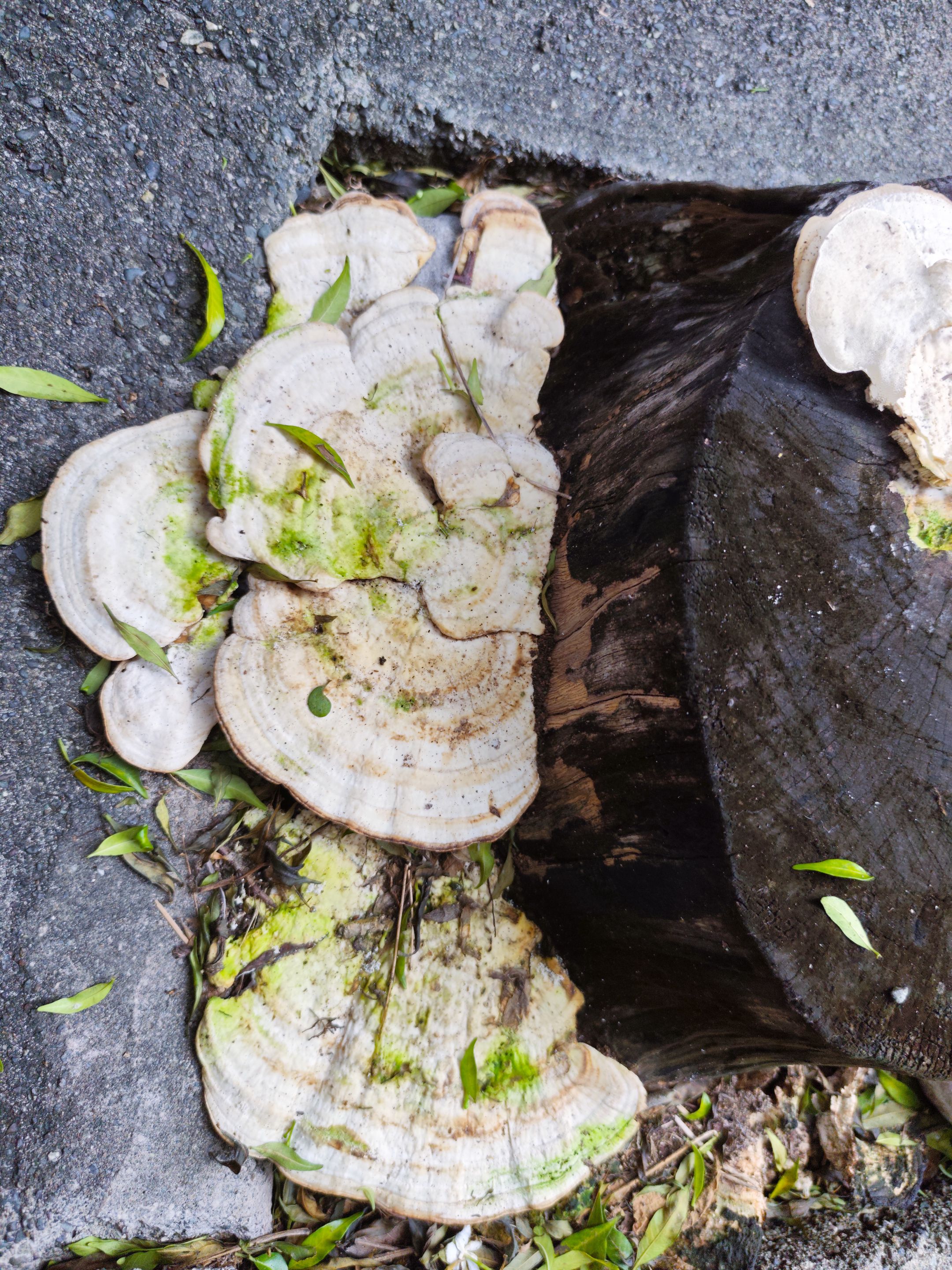| </center> <sbr> <div class ='text-justify'> And just when I was trying to focus on getting a clearer picture, something so tiny caught my eye. It jumped here and there, like it was trying to get my attention. I hope you can spot the toad in this picture, lol! It is so small that my phone camera couldn't take a sharper photo of it.</div> <center>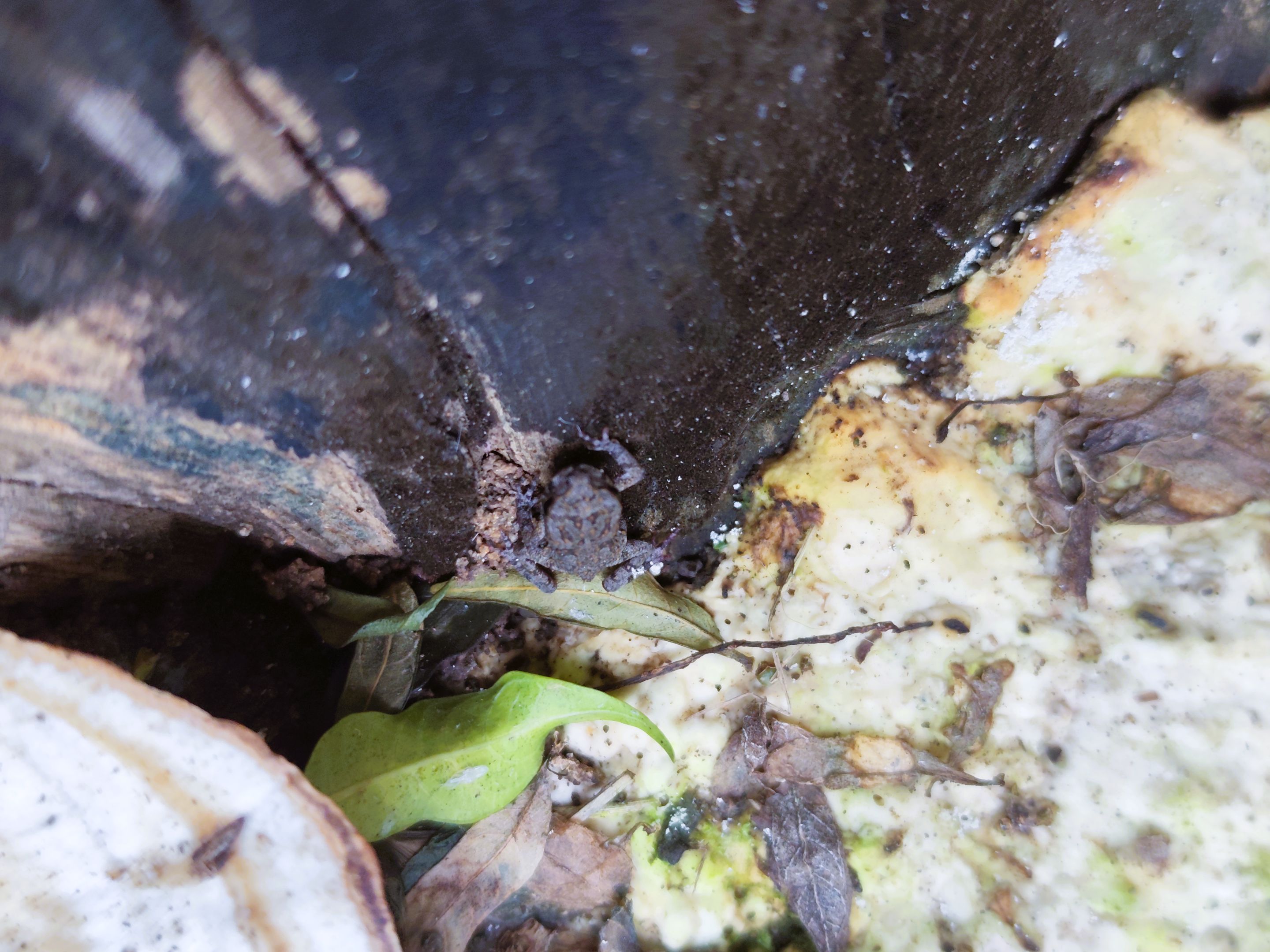</center> <sbr> <div class ='text-justify'> After watching it for a while, I decided to leave and not bother it any longer. With Yongi in my arms, we walked toward the concrete fence, hoping I'd see more mushrooms, but there were none. So clicked... clicked... clicked on the plants instead before hopping into our vehicle and driving away.</div> <center> |||| |-|-|-| |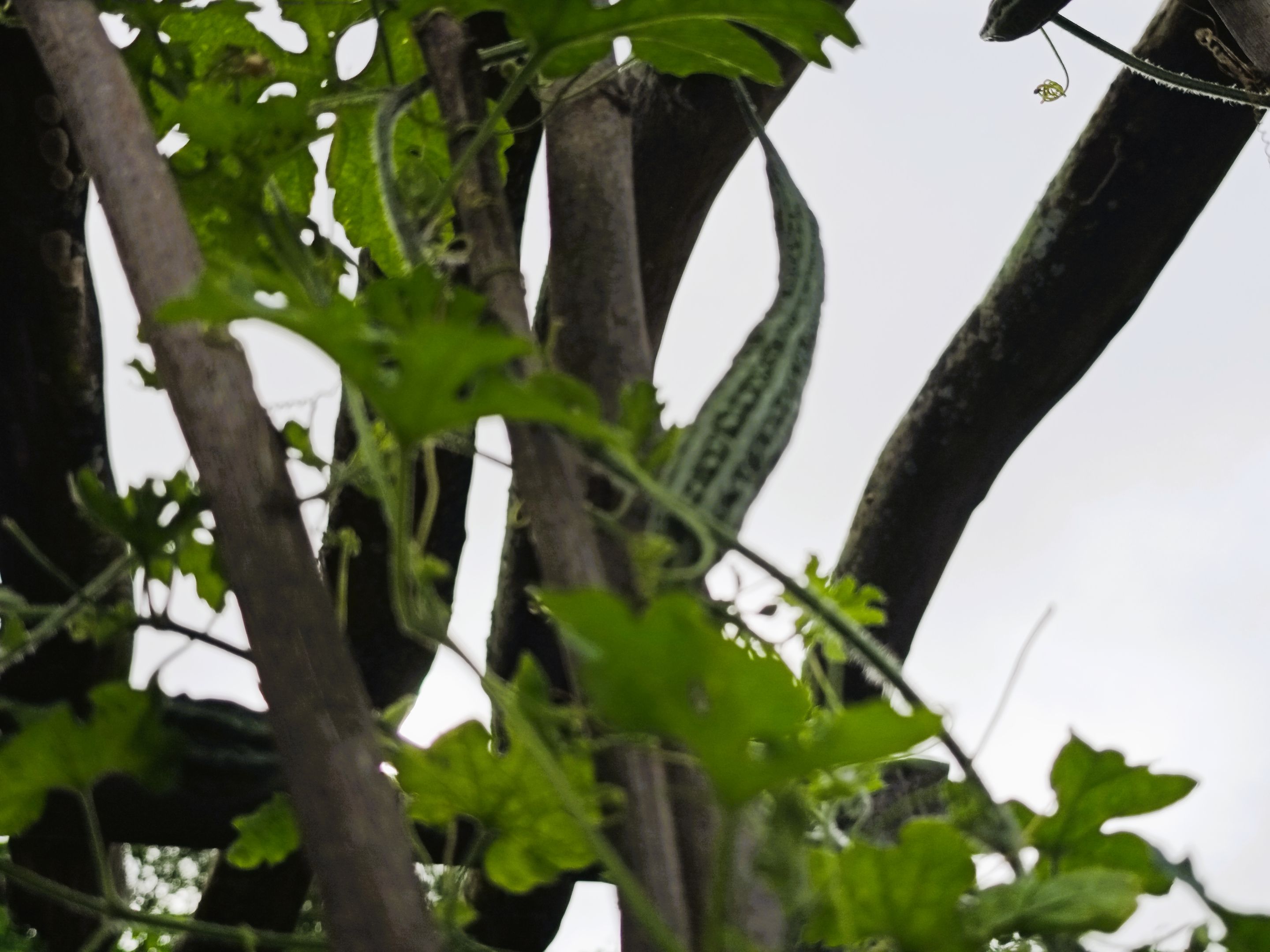|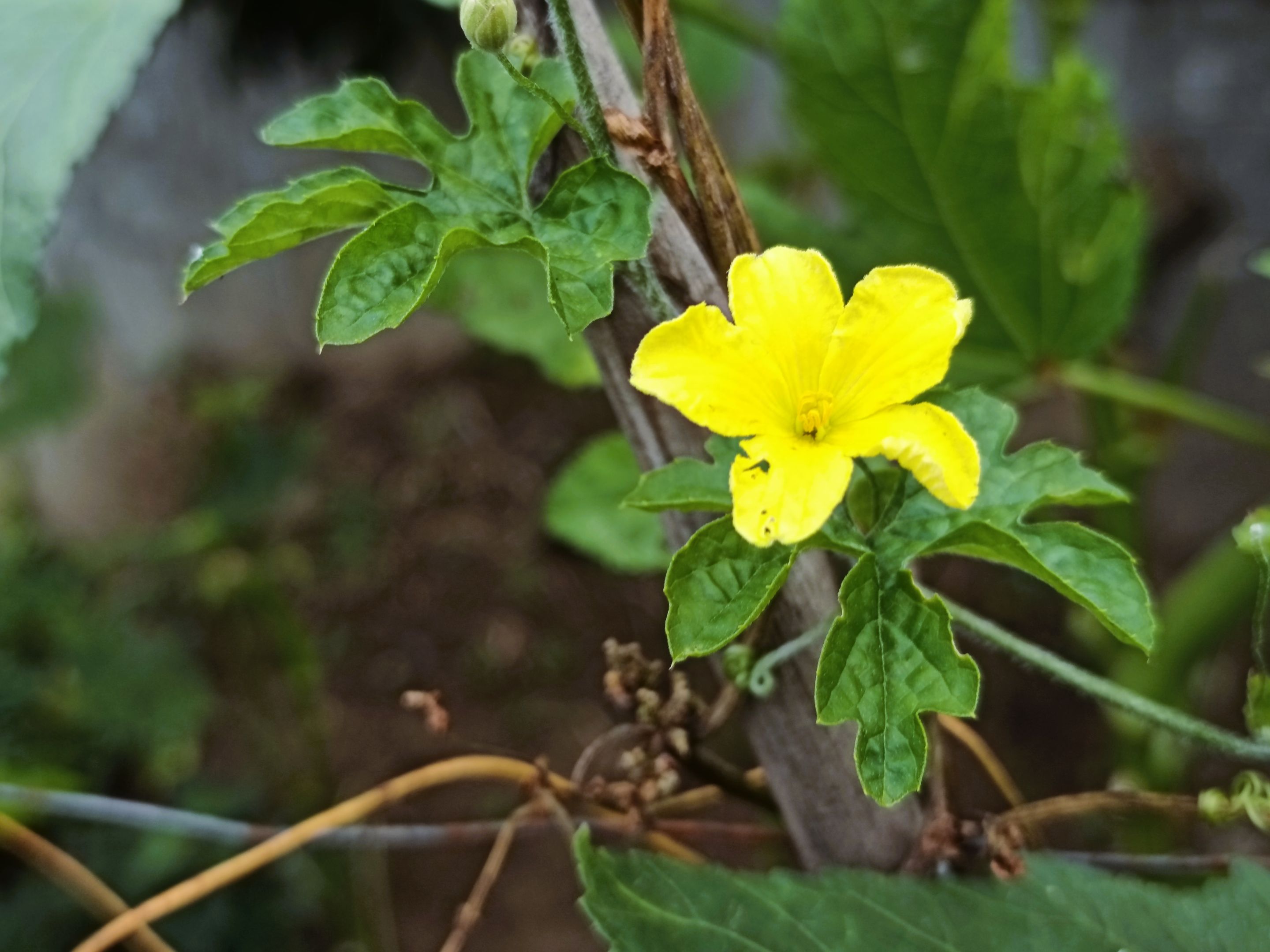|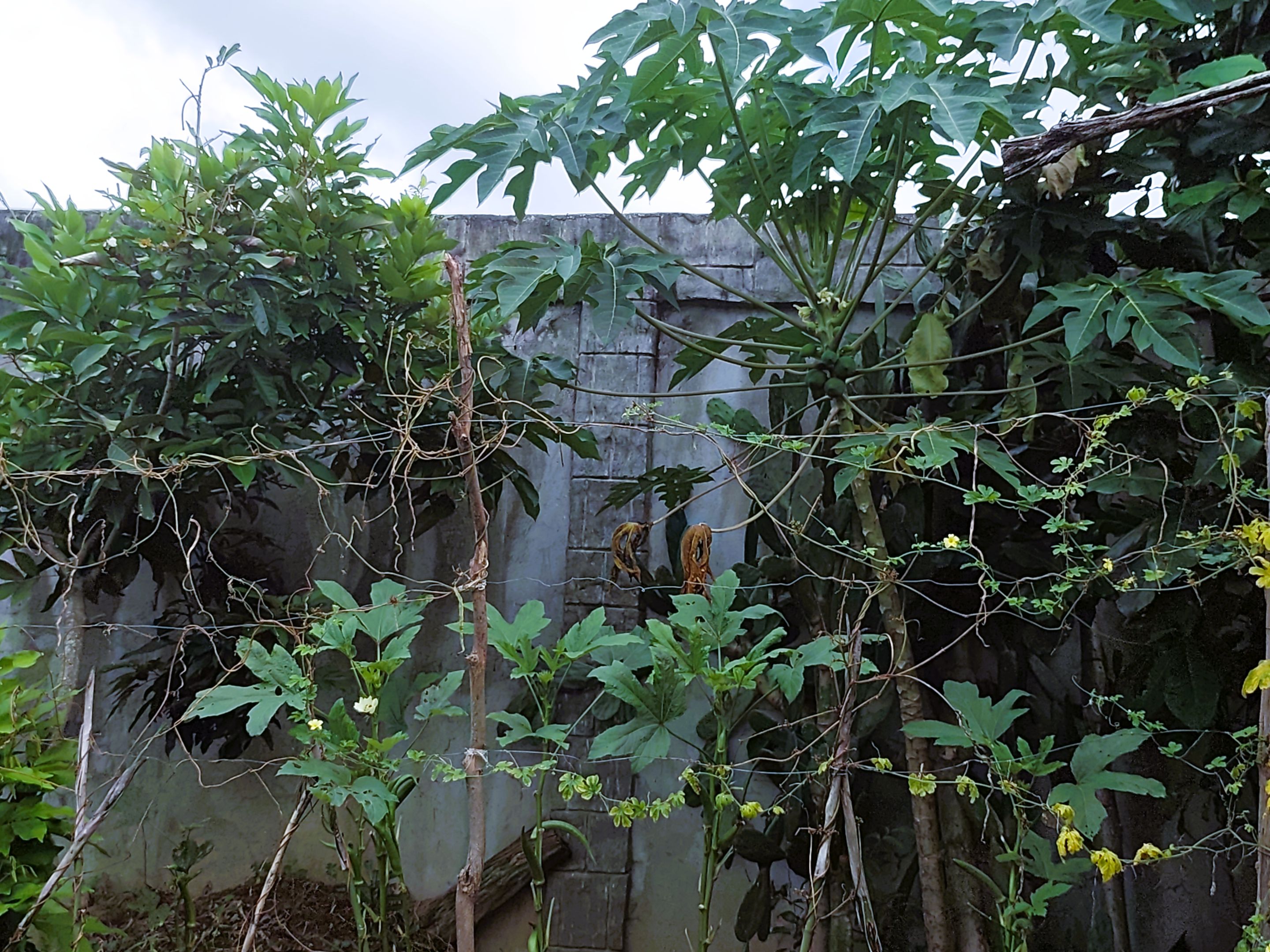| </center> <sbr> <div class ='text-justify'> Meanwhile, this cluster of fungi was photographed in our yard today. I actually saw them a few days ago, and they were still small, but I had forgotten about them until the husband pointed them out yesterday, asking if I had seen them. They have grown a lot bigger and changed in colors too!</div> <center> ||| |-|-| |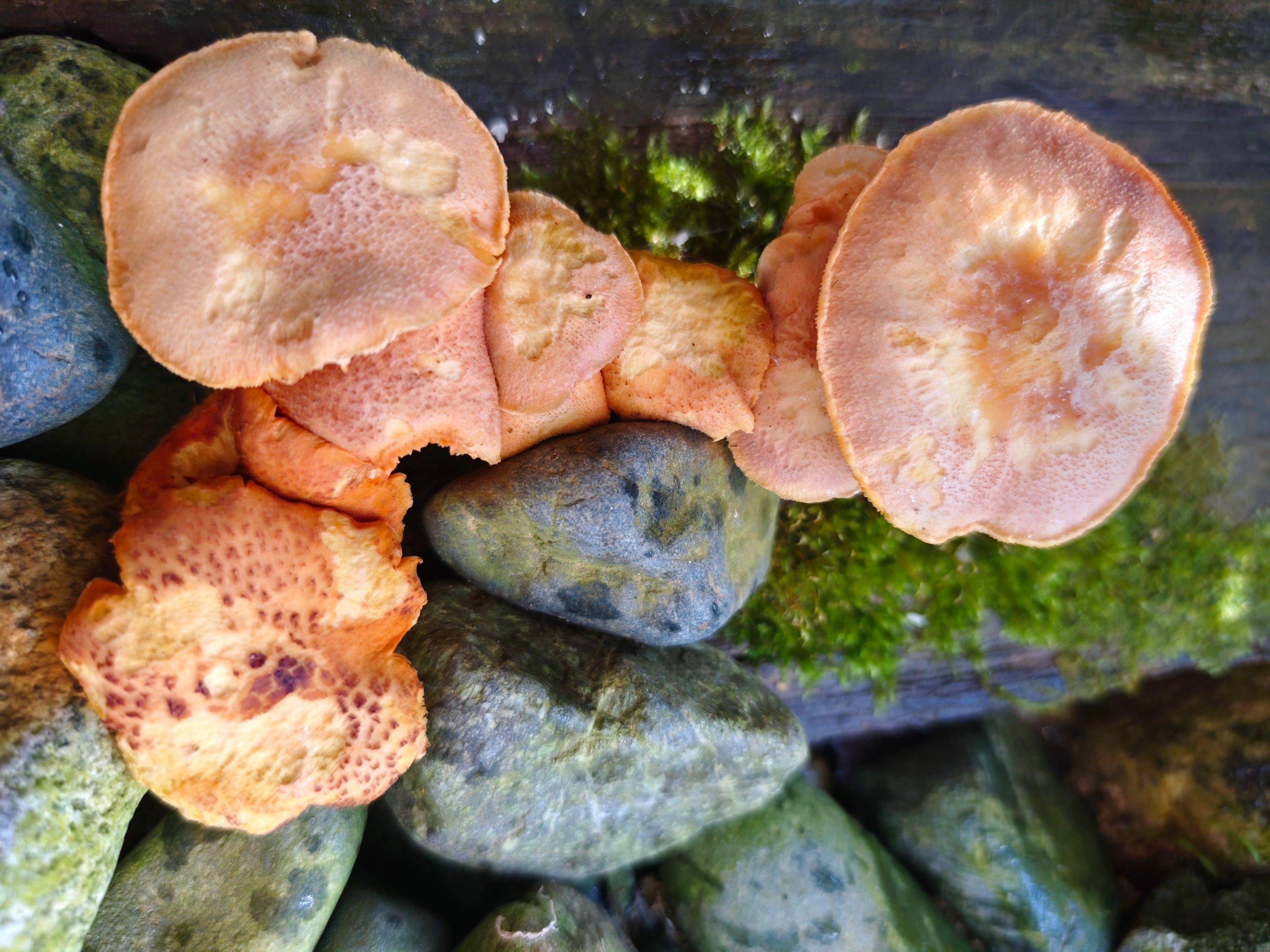|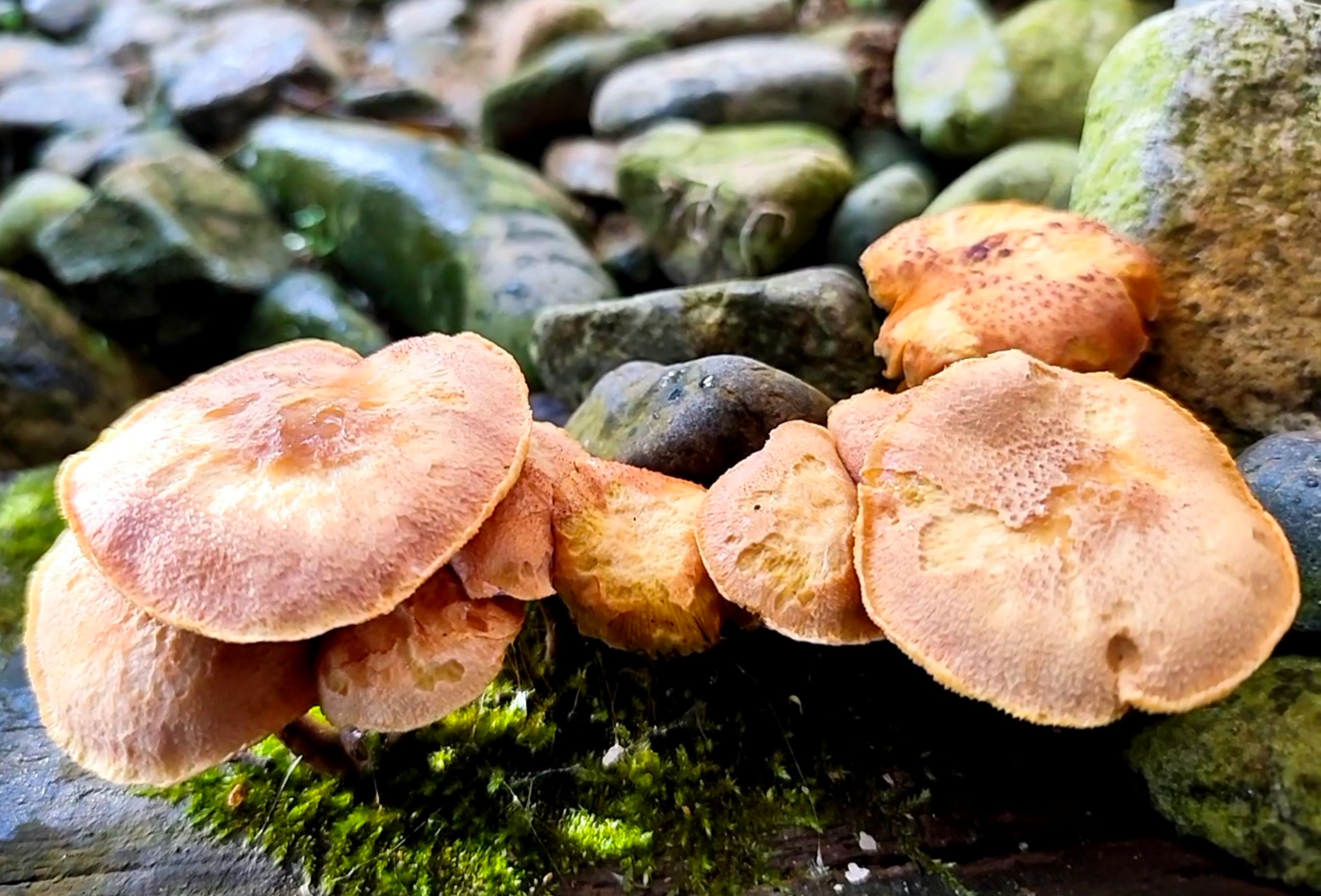|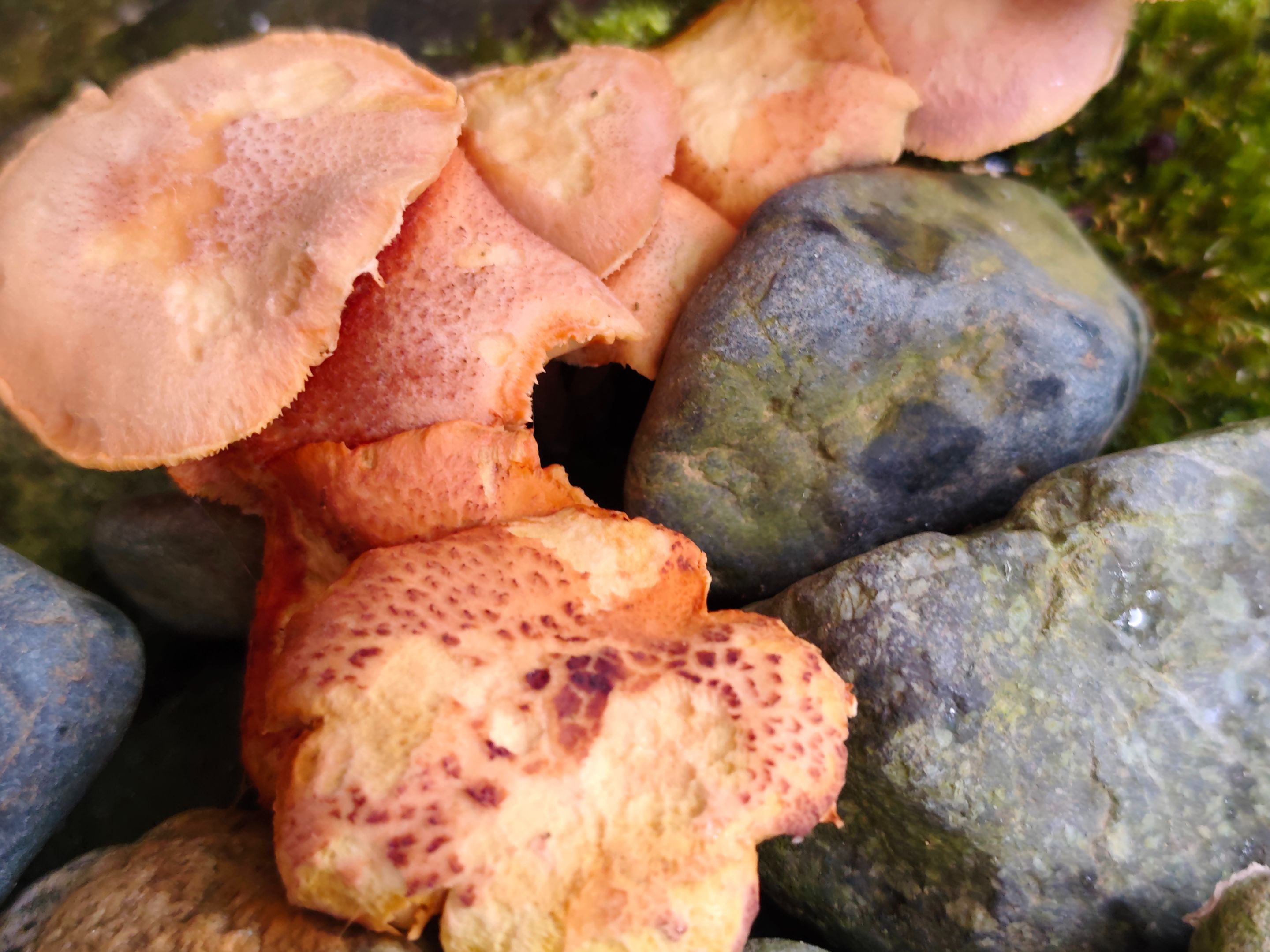| |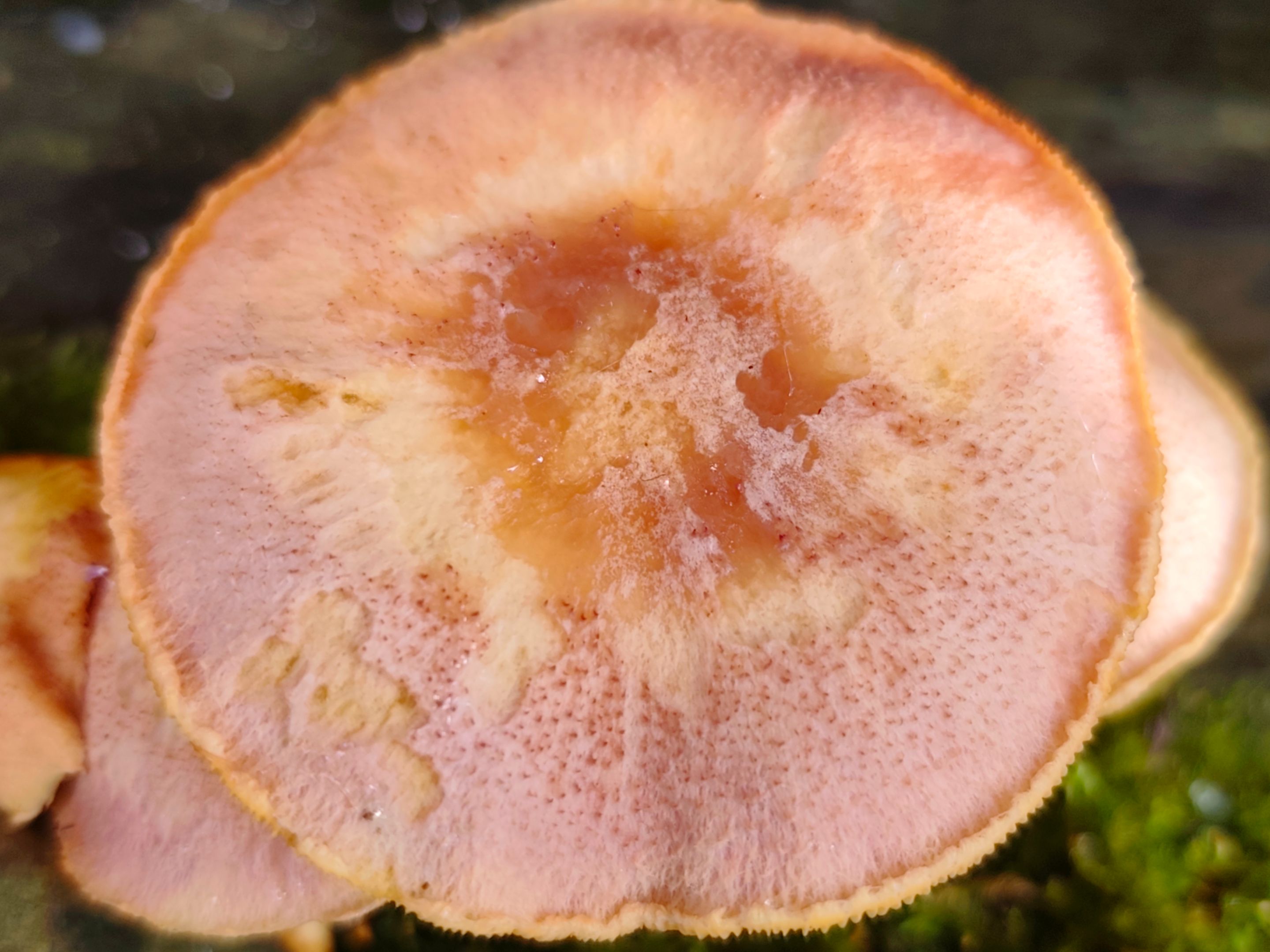|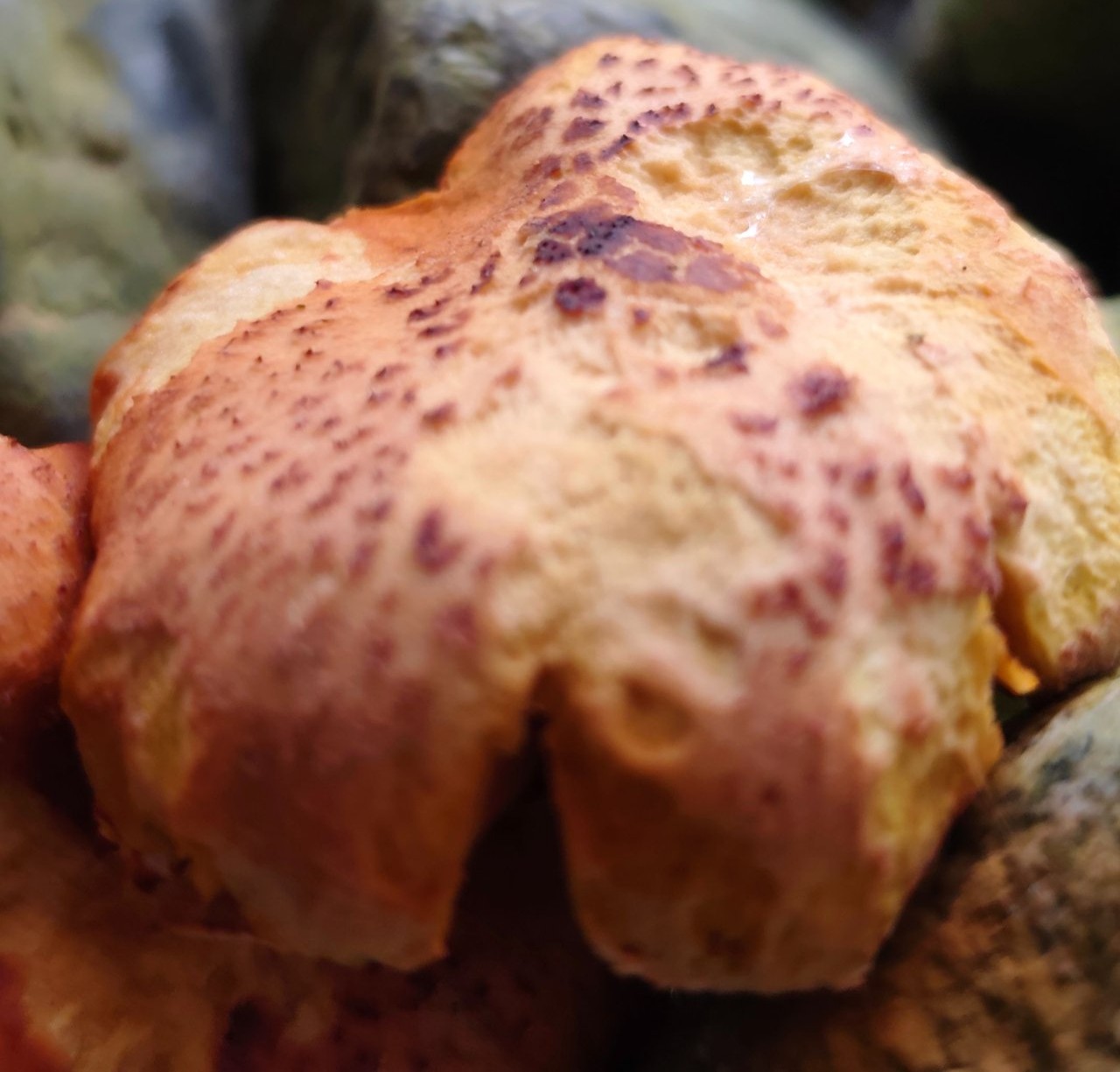|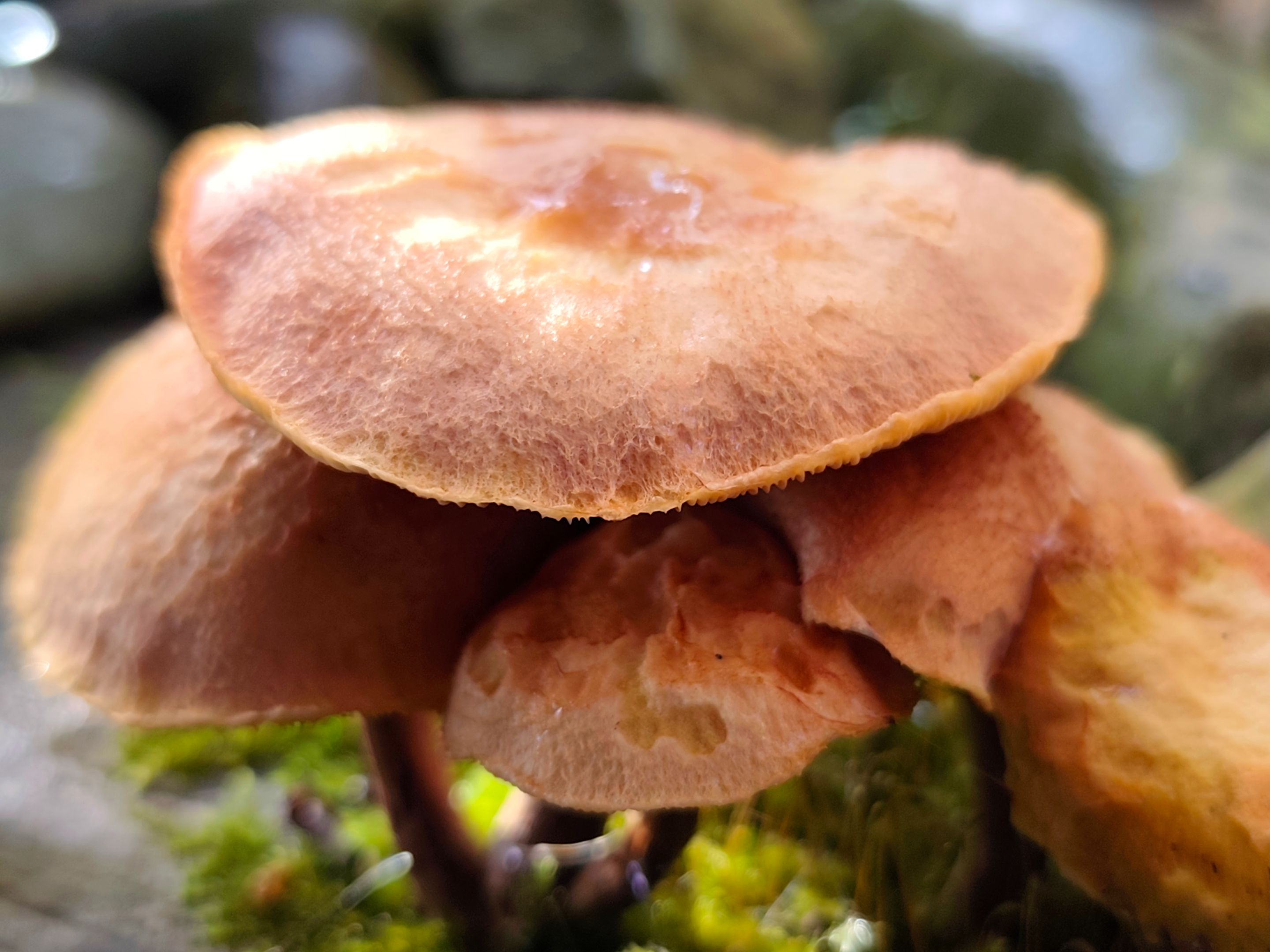| </center> <sbr> <div class ='text-justify'> Growing on a decaying log, the fungi formed what seemed like a wee community or something. Google Lens identified them as Gymnopilus, meaning "naked cap," but I'm not sure if that's correct. It's quite interesting how they became clustered when they were apart a couple of days ago, and they were dark gray. Now, they appear more orange. What a transformation in so short a time. Nature is truly a wonder!</div> --- <sup>All photos are my own. 10102025/19:50ph</sup>
👍 zuun.net, neoxianvoter, stdd, d-zero, ladiesofhive, solaiman.sports, fitbee, coquicoin-leo, fantagira, hive-lu, delilhavores, amberkashif, iaiman, mavis-muggletum, coquicoin, tengolotodo, fantagira7, mhizsmiler.leo, bala41288, vyb.curation, hive-up, balaz, kanibot, kamaleshwar, chandra.shekar, kannannv, dwinblood, richardcrill, flamistan, khoola, trostparadox.vyb, leprechaun, steemexperience, vyb.pob, coffeebuds, proofofbrainio, saboin.pob, pishio, anacristinasilva, shanhenry, mineopoly, rtonline, eds-vote, dab-vote, coolguy123, successchar, jilt, noctury, bulliontools, eolianpariah2, joeyarnoldvn, piensocrates, clubvote, rezoanulvibes, hive-106316, josequintana, diosarich, hoosie, sidekicker2, humoalex, lauxbastidas, sagarkothari88, theshot2414, michupa, elderdark, chidistickz, sbi8, sbi-tokens, sneakyninja, cicisaja, thedailysneak, silverstackeruk, spinvest, eddie-earner, dailydab, mondoshawan, duduk, underground, samsemilia7, lolasophiedanton, hivedrip, partytime.inleo, iviaxpow3r, thorlock, mighty-thor, lisamgentile1961, beststart, ijebest, iproto, k4rl4, maaasha, hive-113115, hive-100059, miprimerconcurso, beauty197, friendmoose.pob, katherine-w, samantha-w, myintmo.shweyi, steempty, andresdfc, jane1289, nonsowrites, jim888, princessluv, reaken, aftersound, jlufer, skiptvads, darsico, zekepickleman, germansailor, sabine-reichert, sparschwein, dachcolony, webhoster, matschi, dreimaldad, helpyou, monster.oo7, kissi, davideownzall, smartvote, sylmarill, miosha, bhattg, good-karma, esteemapp, esteem.app, ecency, ecency.stats, photolovers1, bloghound, drwom, sunisa, auleo, irisworld, blumela, imfarhad, ecency-star, allentaylor, sekani, bigorna1, poplar-22, ngwinndave, empressjay, rafasanz93, hiventhusiast, ene22, lightofhope, suarlex, sayee, cherryng, yoieuqudniram, linlove, jmis101, sampraise77, dickturpin, catharsis, zhula, uzoma24, letusbuyhive, oadissin, asiaymalay, mercurycodm, nazomimatute1998, intishar, kalibudz23, lee1938, liotes.voter, seckorama, achim03, pixiepost, liotes, mateodm03, kaibagt, gadrian, ctpsb, cursephantom, jeanlucsr, johnripper, ph1102.ctp, archon-gov, bigtakosensei, ykretz, hivelist, ganjafarmer, zydane, saboin.ctp, careassaktart, muktakinahmed, combination, amiegeoffrey, savvytester, amjadsharif, discovery-it, spiceboyz, gianluccio, ciuoto, carolineschell, marcolino76, straykat, alequandro, piumadoro, mad-runner, sbarandelli, vittoriozuccala, spaghettiscience, phage93, cooltivar, idayrus, nattybongo, coccodema, jessica.steem, middleearth, adinapoli, lallo, titti, stregamorgana, yanezdegomera, meeplecomposer, tinyhousecryptos, maruskina, victoriaxl, omodei, capitanonema, damaskinus, marcellasunset, discovery-blog, hjmarseille, ghastlygames, peterpanpan, matteus57, bindalove, eolinde, maridmc, mattbrown.art, farmingtales, franvenezuela, jrjaime, larissalugo, tonmarinduque, arc7icwolf, cryptogillone, crimsonowl-art, digy, yzamazing, sassy.cebuana, blip-blop, iamscinttwister, melcakes, ghilvar, sararossi, marcelloracconti, dandelion24, katiekate86, chiddy, blueoctopus, armandosodano, dannewton, jlsplatts, denisda, kharrazi, simgirl, quiubi, flewsplash, andre.btc, jazlove, carrinm, joseluis91, monsterbuster, difo92,